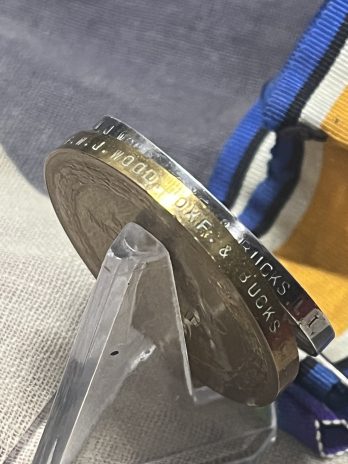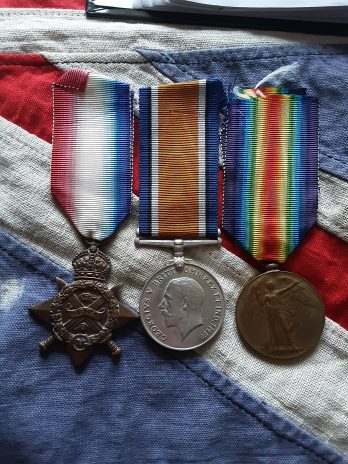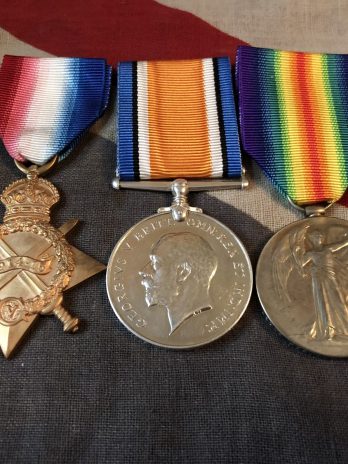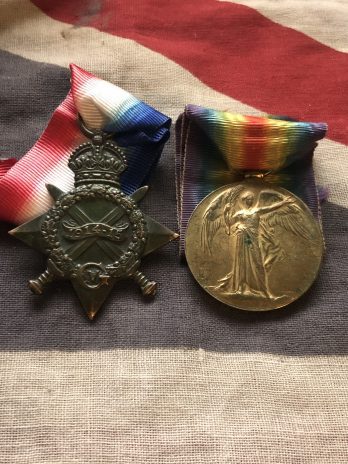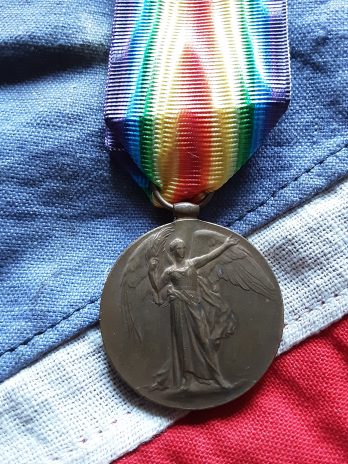Correctly named 3687 Pte WJ Wood Oxf & Bucks LI
William John Wood was born to William and Sarah in 1893.
He enlisted into the 4th (Reserve) Bn Ox & Bucks LI in December 1914.
He went overseas with the the 2/4Bn on the 26th of May 1916.
On May 24, 1916, the 2/4th Oxfordshire and Buckinghamshire Light Infantry landed in France. Members of the Battalion within a day or two were addressing their first field postcards to England. Active service, of which the prospect had swung, now close, now far, for 18 months, had begun.
The 61st Division, to which the Battalion belonged, concentrated in the Merville area. The usual period of ‘instruction’ followed. The 2/4th Oxfords went to the Fauquissart sector, east of Laventie. Soon the 61st relieved the Welsh Division, to which it had been temporarily apprenticed, and settled down to hold the line.
It was not long before the Battalion received what is usually termed its ‘baptism of fire.’ Things were waking up along the front in anticipation of the Franco-British attack on the Somme. Raids took place frequently. Fighting patrols scoured No-Man’s-Land each night. In many places at once the enemy’s wire was bombarded to shreds. By the end of June an intense feeling of expectancy had developed; activity on both sides reached the highest pitch. The Battalion was not slow in playing its part. One of the early casualties was Lieutenant Moberly, who performed a daring daylight reconnaissance up to the German wire. He was wounded and with great difficulty and only through remarkable pluck regained our lines.
That same night the Battalion did its first raid, by B Company under Hugh Davenport. The raid was ordered at short notice and was a partial success. If the tangible results were few, B Company was very properly thanked for its bravery on this enterprise, which had to be carried out against uncut wire and unsubdued machine-guns. Zeder, a lieutenant with a South African DCM, was mortally wounded on the German wire and taken prisoner. The casualties were numerous. Davenport himself was wounded, but unselfishly refused treatment until his men had been fetched in. It was a night of battle and excitement. To the most hardened troops a barrage directed against crowded breastworks was never pleasant. The Battalion bore itself well and earned recital, albeit with some misdescription, in the English press a few days later.
During July 1916 the Battalion was in and out of the breastworks between Fauquissart and Neuve Chapelle. When the 184th Infantry Brigade went back to rest the Battalion had billets on the outskirts of Merville, a friendly little town, since levelled in ruins; and, when reserve to the Brigade, in Laventie. Brigade Headquarters were at the latter and also the quartermasters’ stores and transport of battalions in the line.
During the Battle of Lys in April/May 1918, the Battalion were absorbed into the 25th Entrenching Battalion.
Entrenching battalions were temporary units formed in the armies of the British Empire during the First World War. Entrenching Battalions were trained as infantry, but were primarily utilized for manual labour duties such as trench repair, wire laying, road making and assisting tunnellers, pioneers, engineers and signals. The Battalions were also used as pools of men from which drafts of replacements could be drawn by conventional infantry battalions.
The Battalion headed to Egypt in March 1919.
William, we see married Isabel Muriel Stewart in 1918 and in 1921, we find them living at 36 Chiswell Road, Oxford with William working as a labourer for ROAC.
In 1939, they have moved to ‘The Dock’, Middleburton, Chipping, Norton in Oxford. William we see is employed as a general labourer. We also see him listed as a member of the ARP.
William died in 1969.
Both medals are his full entitlement and come with original silk ribbons.
Related products
-
WWI
1914 Star Trio. John Hacking. 7th Field Bakery, Army Service Corps
£140.00Original price was: £140.00.£125.00Current price is: £125.00. Add to basket





